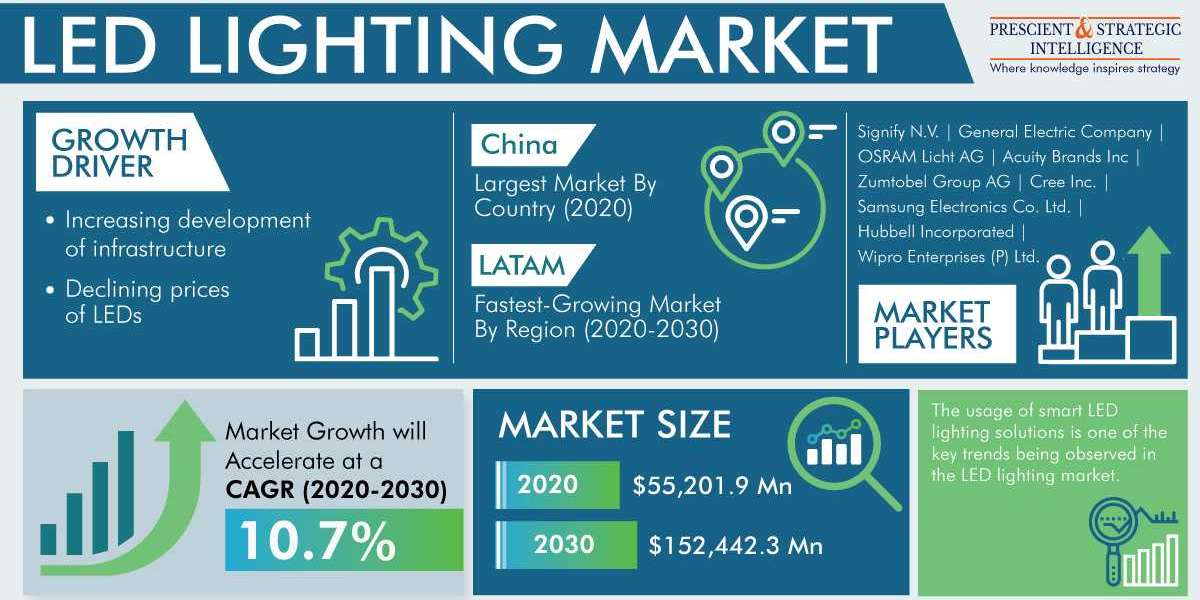The global LED lighting market revenue stood at $55,201.9 million in 2020, and it is expected to rise to $152,442.3 million by 2030, demonstrating a CAGR of 10.7% from 2020 to 2030 (forecast period). The major factors propelling the market are the rising use of energy-efficient lighting solutions, falling costs of LED lights, and surging infrastructure development activities across the world. Additionally, the soaring investments being made by the governments of several countries, such as the U.A.E., China, India, Austria, Spain, and Singapore, in smart city development projects are also driving the market.
For instance, the Indian government has recently announced its plans to develop 100 smart cities across the country by 2030. The government has approved nearly $15 billion for this project. Likewise, Barcelona (Spain) has witnessed the deployment of 3,000 smart streetlights based on the LED technology over the last few years. The mushrooming use of smart LED lighting solutions is becoming a major trend in the industry. The popularity of these lights has soared massively in recent years, especially in China and Japan, because of their ability to control lighting from anywhere and at anytime and high energy efficiency.
Browse detailed report - LED Lighting Market Analysis and Demand Forecast Report
Additionally, their advanced features, such as motion activation technology, adaptive lighting, and automatic off/on, also assist in increasing the cost savings for commercial and residential end users by reducing electricity consumption significantly. Depending on product type, the LED lighting market is divided into lamp and luminaire categories. Between these, the luminaires category dominated the market in 2020, due to the growing use of these systems in industrial and commercial buildings and the implementation of favorable government initiatives.
Moreover, these systems can be easily controlled and they assist optic designers in using less light for illuminating the same area. When installation type is taken into consideration, the LED lighting market is classified into retrofit and new. Of these, the retrofit category is predicted to exhibit faster growth throughout the forecast period, owing to the rising requirement for the replacement of sodium-vapor and incandescent lamps with LEDs in several countries, such as the U.A.E., U.S., India, Japan, South Korea, and China.
Geographically, the LED lighting market will demonstrate the fastest growth in the Latin American (LATAM) region in the coming years, as per the estimates of the market research organization, PS Intelligence. This is attributed to the ballooning middle-class population, rising urbanization rate, and surging residential construction activities in the region. Additionally, the increasing focus on deploying solar street lighting and smart street lighting systems in Mexico and Brazil is predicted to fuel the sales of outdoor LED lighting solutions in the region in the forthcoming years.
Hence, it can be said with confidence that the sales of LED lighting systems will soar in the coming years, mainly because of the growing requirement for energy-efficient lighting solutions, development of smart cities, falling costs of LED lights, and increasing infrastructure development and construction activities all over the world.








